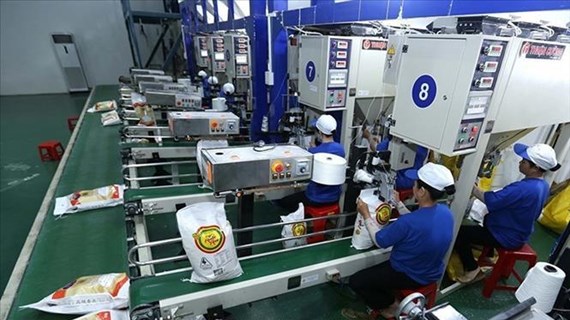HCM City gets ready for new foreign investment wave post-COVID-19
 Illustrative image (Photo: VNA)
Illustrative image (Photo: VNA)Hanoi (VNA) – Vietnam and Ho Chi Minh City in particular have remained appealing to foreign investors who are continuing to pour capital into the southern economic hub despite the COVID-19 pandemic.
The municipal Statistics Office reported that from the beginning of this year to April 20, the city attracted more than 1.3 billion USD in foreign direct investment (FDI), including newly-registered and added capital, and share purchases.
According to the HCM City Export Processing and Industrial Zones Authority (HEPZA), nearly 118 million USD worth of investment has been poured into HEPZA so far this year, up 86 percent year-on-year.
Of the total, FDI reached 65.98 million USD, up nearly 2.58 times against the same period last year.
With the favourable premise, HCM City is expected to welcome a big wave of investments post-COVID-19 when investors from the US, Europe and Japan move their production lines to Vietnam, said Nguyen Van Be, Chairman of the HEPZA Business Association.
Stephan Pudwill, Vice Chairman of Techtronic Industries that has invested in the Saigon High-Tech Park, commended the city’s good human resources, infrastructure and logistics, good-quality suppliers, and local authorities’ commitment to supporting investors.
Meanwhile, Cleandye Group from the Netherlands said it has received assistance from local agencies when investing in the Hiep Phuoc Industrial Park in Nha Be district.
To welcome the new investment wave, Tran Hoang Ngan, head of the HCM City Institute for Development Studies, suggested setting standards for investors, saying priorities should be given to high-tech projects.
High-tech development can create a ripple effect on most industries, thus creating high-quality products, he further explained.
Dao Xuan Duc, deputy head of HEPZA, proposed establishing specialised industrial parks and attracting more investment in the production of materials, especially those used in major industrial sectors.
Besides, it is necessary to set up zones for support industries using State budget to regulate land lease prices and lure investors in sectors targeted by the city and the Government, he said.
Deputy Director of the city’s Department of Industry and Trade Nguyen Phuong Dong urged existing industrial parks to try and attract intensive investment towards sustainable development.
They should prioritise businesses with cutting-edge technologies and high added values while improving export capacity, contributing to socio-economic development towards industrialisation, modernisation and urbanisation in outlying areas, the official said.
The municipal People’s Committee has assigned the Department of Planning and Architecture to coordinate with HEPZA and relevant agencies to review the planning of processing and industrial parks and propose solutions to create an investment land fund.
The department has also been assigned to assist the city in building a 380ha high-tech industrial park in Pham Van Hai commune, Binh Chanh district.
Ho Chi Minh City is the largest city in Vietnam and the economic hub of the southern region. Accounting for 0.6 percent of Vietnam’s total land area and about 9 percent of the country’s population, it is part of the southern key economic zone, which also comprises Dong Nai, Ba Ria - Vung Tau, Binh Duong, Long An, Tay Ninh and Binh Phuoc provinces. In the southern economic hub, over 3,000 projects across all sectors are supported by foreign capital, while the number of registered enterprises has exceeded 100,000.
In 2019, the city attracted 8.3 billion USD worth of foreign investment, with its labour productivity being nearly three times that of the whole country (299.8 million VND per person, an increase of 6.8 percent over 2018).
Meanwhile, the total number of international visitors to the city reached 8.5 million, a year-on-year increase of 14 percent with revenues up by 14.5 percent over 2018
The local gross regional domestic product (GRDP) reached more than 1.34 quadrillion VND, an 8.32 percent increase year-on-year.
Before the outbreak of COVID-19, the city set a target of achieving a growth rate of 8.5 percent for GRDP in 2020, with total private investment accounting for 35 percent of GRDP.
This year, HCM City also aims to have 44,000 new businesses, creating 135,000 new jobs./.












